For Canadians, having a good security system is key to keeping homes and families safe. With growing worries about security threats, it’s vital to get a top security system.
Looking for the best home security systems in Canada? It’s important to know what’s out there. Different systems have various features, prices, and contract terms. So, picking one that meets your needs is a must.
Key Takeaways
- Top security systems offer customizable features and integration with smart devices.
- Pricing varies significantly among providers, with options starting from $100.
- Some systems require professional installation, while others are DIY-friendly.
- Contract requirements differ, with some providers not needing a contract.
- Monthly monitoring fees range from $8 to $55 or more.
Understanding Home Security Needs in Canada
Canada’s wide range of geography and climate means homes need strong security. Homeowners face threats like burglaries and environmental dangers. These risks change a lot depending on where you live.
Common Security Threats in Canadian Homes
Canadian homes face many security risks. Burglary is a big worry, with different provinces having different rates.
Burglary Statistics Across Canadian Provinces
Some provinces have more burglaries than others. For example, cities have seen more break-ins. This shows the need for good security.
Seasonal Security Vulnerabilities
Canada’s changing seasons affect home security. In winter, thieves might find it easier to sneak in because it’s darker and fewer people are outside.
Regional Security Considerations
Where you live greatly affects your home’s security needs. Cities and rural areas have different challenges. So do places with special weather risks.
Urban vs. Rural Security Needs
Cities need advanced security systems because of more crime. Rural areas might need solutions for being far from help and facing weather dangers.
Climate-Related Security Challenges
Canada’s weather is a big security issue. Extreme cold and natural disasters like wildfires or floods can make homes less secure.
How to Assess Your Specific Security Requirements
Homeowners can figure out their security needs by doing a home security check.
Home Security Audit Checklist
- Evaluate your home’s exterior lighting and visibility.
- Check the condition and security of doors and windows.
- Consider the installation of a complete security system.
- Assess the need for environmental sensors and monitoring.
For more on improving home security, check out security systems for reliable choices.
Types of Security Systems Available in Canada
Canadians have many security systems to pick from. These range from simple setups to smart home systems. The right choice depends on your security needs, budget, and what you like.
Monitored vs. Unmonitored Systems
Security systems fall into two main categories: monitored and unmonitored. Monitored systems connect to a security company’s center. They alert authorities in emergencies. For example, ADT home security offers this service.
Response Times and Emergency Protocols
Monitored systems respond quickly because the center alerts authorities right away. Unmonitored systems send alerts to your devices.
Cost Comparison and Value Assessment
Monitored systems cost more because of monthly fees. But they offer extra security. Unmonitored systems are cheaper but need you to stay alert.
Wired vs. Wireless Security Solutions
The choice between wired and wireless systems depends on installation and reliability.
Installation Complexity Factors
Wired systems are harder to install and need professionals, mainly for big homes. Wireless systems are easier to set up and more flexible.
Reliability in Canadian Weather Conditions
Wireless systems might face interference, but modern ones reduce this. Wired systems are less affected by weather.
Smart Home Integration Options
Many security systems now integrate with smart homes. This makes them more convenient and useful.
Compatibility with Canadian Service Providers
It’s important to pick a smart security system that works with Canadian providers. This avoids connectivity problems.
Choosing the right security system means looking at costs, complexity, and security needs. Knowing your options helps Canadians protect their homes and businesses well.
Essential Components of a Complete Security System
A top-rated security system is your first defense against threats. It’s key to know the main parts of a complete security system to protect your home.
Door and Window Sensors
Door and window sensors are key parts of any home security system. They alert you if someone opens a door or window, helping to keep intruders away.
Placement Optimization Strategies
To work best, place door and window sensors on all entry points. This means not just doors but also windows on the ground floor and other possible entry spots.
Motion Detectors and Cameras
Motion detectors and cameras add more security by watching for movement inside and outside your home. They can start lights, alarms, or send alerts to your phone.
Indoor vs. Outdoor Camera Selection
Choosing between indoor and outdoor cameras depends on your needs. Outdoor cameras handle weather, while indoor ones are more hidden.
Weather-Resistant Options for Canadian Climate
Canadian homeowners need outdoor cameras that can handle the weather. Look for ones with an IP65 or higher rating to stand up to snow, rain, and cold.
Control Panels and Mobile Apps
The control panel is your system’s brain, letting you control and monitor it. Modern systems often have mobile apps for remote access.
User-Friendly Interfaces for All Family Members
A system that’s easy for everyone to use is important. Choose systems with simple controls and clear instructions.
Environmental Sensors
Environmental sensors find dangers like smoke, carbon monoxide, and leaks. They make your home safer.
Integration with Security Monitoring
These sensors work with your security system, adding to your home’s safety. They offer more than just security.
| Component | Function | Key Features |
|---|---|---|
| Door and Window Sensors | Detect entry breaches | Wireless connectivity, battery life |
| Motion Detectors | Monitor movement | Adjustable sensitivity, pet immunity |
| Cameras | Visual monitoring | Resolution, night vision, weather resistance |
| Control Panels | System control | User-friendly interface, remote access |
| Environmental Sensors | Detect hazards | Smoke, CO, water leak detection |
The Best Security System Canada Options for Different Budgets
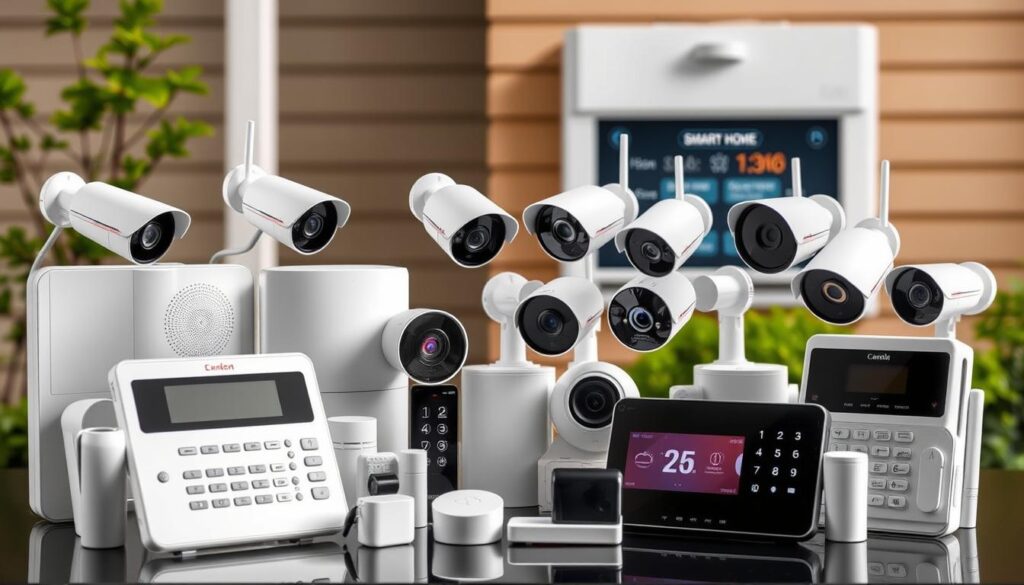
Canada offers a wide range of security systems for all budgets. Whether you’re looking for something premium or budget-friendly, there’s something for everyone. You can find a system that matches your budget and provides the security you need.
Premium Security Solutions ($1000+)
Premium security systems come with advanced features and top-notch quality. They are perfect for those who want the best security for their homes.
Feature Comparison of High-End Systems
- Advanced surveillance cameras with night vision
- Smart home integration for seamless control
- Professional monitoring services for enhanced security
For example, high-end systems from top security providers include voice control and smart alerts.
Mid-Range Options ($500-$1000)
Mid-range security systems offer a good balance between cost and features. They provide essential security features at a lower price.
Best Value Considerations
When picking a mid-range system, think about these:
- Reliability of the brand
- Customer support and service
- Ease of installation and use
Budget-Friendly Systems (Under $500)
Budget-friendly security systems are great for those on a tight budget. They offer basic security features at a lower cost.
DIY Solutions with Professional-Grade Protection
DIY security systems are flexible and save money. Many DIY systems, like those on security review sites, offer top-notch protection without needing professional installation.
By exploring these options, Canadian homeowners can find a security system that fits their budget and meets their needs.
Top Security System Providers in Canada
Several top providers stand out for securing Canadian homes. They offer advanced home security solutions for different needs and budgets.
ADT Canada: Features and Pricing
ADT Canada is a leader in home security. They have various plans and equipment. Their services include 24/7 monitoring and smart home integration.
Coverage Areas and Response Times
ADT Canada covers a wide area. They have fast response times. Their centers are staffed by professionals ready to handle emergencies.
Telus SmartHome Security: Services Overview
Telus SmartHome Security offers a wide range of security solutions. This includes intrusion detection and video surveillance. Their systems work well with other Telus services.
Integration with Existing Telus Services
Choosing Telus SmartHome Security means your services can work together. This can make billing easier and improve service coordination.
Vivint: Smart Home Security Solutions
Vivint is known for its smart home security solutions. They offer advanced door locks and thermostats. Their systems are customizable.
Canadian-Specific Offerings
Vivint has plans and promotions for the Canadian market. This makes them a competitive choice for homeowners.
Rogers Smart Home Monitoring: Packages and Coverage
Rogers Smart Home Monitoring offers various packages. They range from basic intrusion detection to smart home systems.
Bundle Options with Other Rogers Services
Rogers has bundle options. These combine smart home monitoring with internet and TV. This can save customers money.
For more options, visit Best Buy’s smart home security section. It offers insights into available products and technologies.
| Provider | Key Features | Pricing |
|---|---|---|
| ADT Canada | 24/7 Monitoring, Smart Home Integration | Starting at $50/month |
| Telus SmartHome Security | Intrusion Detection, Video Surveillance | Starting at $40/month |
| Vivint | Customizable Smart Home Systems | Starting at $60/month |
| Rogers Smart Home Monitoring | Bundle Options, Complete Security | Starting at $30/month |
In conclusion, Canadians have many recommended security providers to choose from. Each has its strengths and offerings. By comparing them, homeowners can find the best fit for their security needs.
How to Choose Between DIY and Professional Installation

Canadian homeowners have a big decision to make when it comes to security systems. They must choose between doing it themselves or hiring professionals. This choice depends on several factors, like how tech-savvy you are, your budget, and how complex the system is.
Assessing Your Technical Comfort Level
First, you need to think about your technical comfort level. DIY installation needs some tech know-how. You need to understand how to set up and connect different parts of the system.
What to Expect from Professional Installation Services
Professional installation services make things easy. They take care of everything from figuring out your home’s security needs to setting up and testing the system.
Cost Comparison and Long-Term Considerations
DIY installations are often cheaper at first. But, professional installations might be more valuable in the long run. This is because pros offer their expertise and warranties.
Hidden Costs to Watch For
Watch out for hidden costs. These can include extra equipment, fees for monitoring services, and repair costs later on.
| Installation Type | Initial Cost | Long-Term Value | Technical Support |
|---|---|---|---|
| DIY | Lower | Variable | Limited |
| Professional | Higher | Higher | Comprehensive |
The choice between DIY and professional installation depends on your needs, comfort with technology, and budget. By considering the pros and cons, Canadian homeowners can make a smart choice that boosts their home’s security.
Smart Home Security Integration for Canadian Homes
Canadian homeowners are now integrating security systems with smart home platforms. This is a common move to get better security. It’s important to know how to link these systems well.
Setting Up Compatible Smart Home Platforms
To link your security system with a smart home, pick a compatible one. Google Home, Amazon Alexa, and Apple HomeKit are popular choices. Choosing the right one ensures smooth integration and great performance.
Google Home, Amazon Alexa, Apple HomeKit Configuration
Setting up your smart home platform means setting up a hub or bridge. For example, Amazon Alexa needs you to link it to the Alexa app. Apple HomeKit requires you to set up devices through the Home app. Always follow the manufacturer’s instructions for easy setup.
Creating Automation Routines with Security Systems
Automation routines make your security system better by linking it with other smart devices. For instance, you can make your lights turn on when motion detectors detect movement. Automation scenarios boost your home’s security and ease.
Practical Automation Scenarios
Some useful scenarios include setting cameras to record when doors or windows are opened. Or, adjusting your thermostat based on whether you’re home or not.
“Automation is not just about convenience; it’s about creating a more secure and efficient home environment,”
says a security expert.
Future-Proofing Your Security Investment
It’s key to make your security investment last by choosing systems that can grow with technology. Scalability ensures your system stays effective over time.
Expansion and Upgrade Pathways
When picking a security system, think about its growth and upgrade options. Choose systems that let you add new devices or integrate with new platforms easily. This keeps your system up-to-date and effective.
By linking your security system with smart home platforms and setting up automation, you boost your home’s security and comfort. Keeping up with smart home tech helps you get the most from your security investment.
How to Select the Right Monitoring Option
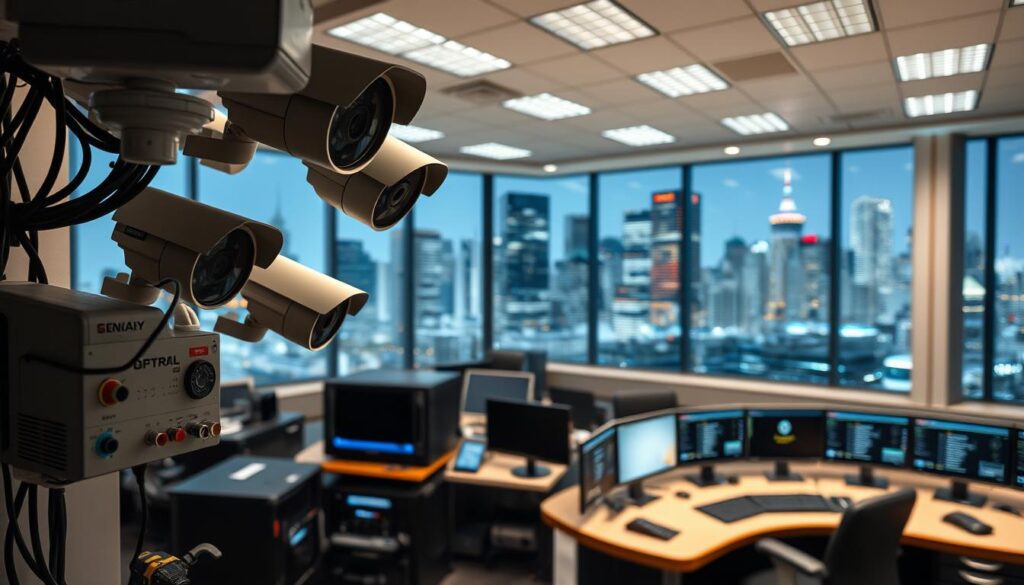
To get the most out of your security system, it’s key to know the different monitoring options. The right choice can really boost your home’s safety. It gives you peace of mind and might even lower your insurance costs.
Evaluating 24/7 Professional Monitoring Services
24/7 professional monitoring means trained people watch your system all day, every day. It’s great for those wanting extra security and quick help in emergencies.
Questions to Ask Possible Monitoring Providers
- What is the response time in case of an alert?
- Are the monitoring centers UL-certified?
- What are the costs associated with the monitoring service?
- Can they provide references or reviews?
Setting Up Self-Monitoring Through Mobile Applications
Self-monitoring lets you get alerts and check your system from your phone. It’s perfect for tech lovers who like to handle security alerts themselves.
Creating Alert Protocols for Family Members
It’s important to set clear rules for family on how to act when they get security alerts. They should know how to react to different alerts and when to call the police.
Configuring Hybrid Monitoring Solutions
Hybrid solutions mix professional and self-monitoring. For example, you can have your system watched by pros during the day and by you at night.
Customizing Alert Thresholds
Adjusting alert levels is key to avoid false alarms and only get alerts when needed. This means tweaking your devices’ sensitivity and setting up your system’s alert preferences.
| Monitoring Option | Cost | Response Time | Customization |
|---|---|---|---|
| 24/7 Professional | Higher | Immediate | Limited |
| Self-Monitoring | Lower | Dependent on User | High |
| Hybrid | Moderate | Varies | Moderate |
For more info on home security companies and their services, check out this resource. It has lots of options and reviews to look through.
Navigating Security System Contracts and Warranties
Canadians searching for reliable home security companies face complex contracts and warranties. It’s key to understand these details to make a smart choice. This choice should fit your security needs and budget.
How to Review Contract Terms with Canadian Providers
When checking contract terms, pay close attention to the contract length, payment plans, and early termination penalties. Look for contracts that offer flexibility. Make sure you grasp all the terms.
Red Flags in Security Contracts
Watch out for contracts with long terms, high cancellation fees, or big upfront costs. Make sure all verbal agreements are in the written contract to avoid disputes.
Understanding Warranty Coverage and Limitations
Warranty coverage is vital for your security system. Know what’s covered, how long the warranty lasts, and any exclusions. Reliable home security companies usually have good warranties that cover both equipment and labor.
Extended Warranty Options
Some providers offer extended warranties for extra protection. Think if these options are worth it and fit your long-term security plans.
Negotiating Cancellation Policies and Fees
Ask about cancellation policies and fees before signing. Understanding these can help you avoid unexpected costs if you need to cancel or change your service.
Contract Transfer When Moving
If you’re planning to move, see if your provider lets you transfer the contract to a new homeowner. This can make your home more attractive to buyers.
Step-by-Step Security System Installation Guide
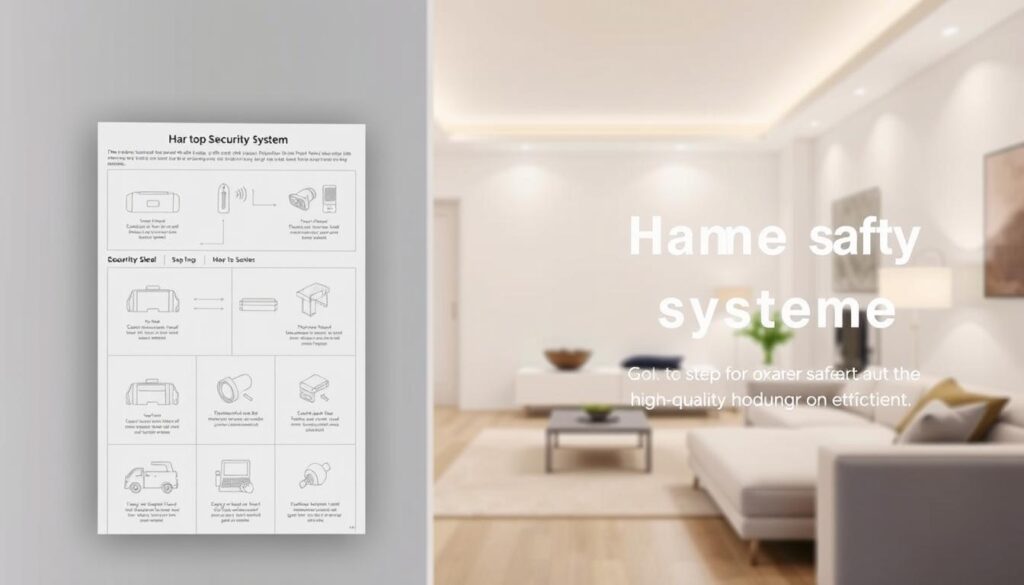
Setting up a security system needs careful planning and execution. It’s a big job, but it’s worth it. A good security system makes your home safer and gives you peace of mind. We’ll guide you through installing your system, from planning to testing.
Pre-Installation Planning and Preparation
Before you start, plan and prepare well. Know your home’s layout and find the weak spots.
Tools and Materials Checklist
Get all the tools and materials you need before starting. You’ll need screwdrivers, drills, and the security system parts.
- Screwdrivers (flathead and Phillips)
- Drill and bits
- Security system components (sensors, cameras, control panel)
- Batteries and power adapters
Component Placement and Installation Process
Where you place your security system parts is key. Right placement helps your system work best.
Optimal Sensor Positioning
Put door and window sensors on all entry points. Motion detectors should cover busy areas and hiding spots.
Install security cameras to watch your home’s inside and outside. Make sure the camera’s view is right.
For more on installing security cameras, check out this step-by-step guide.
System Testing and Troubleshooting
After setting up, test your system to make sure it works.
Common Installation Issues and Solutions
You might run into problems like connectivity issues, sensor problems, or camera issues. Here are some fixes.
| Issue | Solution |
|---|---|
| Connectivity problems | Check your internet and make sure everything is connected right. |
| Sensor malfunctions | Check the batteries and make sure sensors are set up right. |
| Camera distortion | Adjust the camera and clean the lens to get better pictures. |
How to Maximize Home Insurance Benefits with Security Systems
Canadian homeowners can get discounts on insurance by installing advanced security equipment. A good security system makes your home safer. It also shows insurance providers you’re serious about reducing risks.
Documenting Your Security System for Insurance Providers
To get insurance discounts, you need to document your security system well. Keep records of the system’s parts, when it was installed, and any updates.
Required Certification and Proof
Insurance companies want proof your security system meets their standards. Get the needed documents from your security provider to show your insurer.
Applying for Insurance Discounts
After setting up and documenting your security system, apply for discounts. Just contact your insurance company, send the documents, and they might reassess your risk.
Average Savings by Provider
| Insurance Provider | Average Discount |
|---|---|
| Provider A | 10% |
| Provider B | 15% |
| Provider C | 12% |
Working with Canadian Insurance Companies
Canadian homeowners need to know what their insurance companies require for security systems. Some insurers might have specific providers or rules for what counts as a good system.
Policy Adjustment Procedures
After installing a security system, you’ll need to update your insurance policy. This might mean adding the new security features and possibly changing your premium.
Maintaining and Updating Your Security System

To keep your home safe, it’s key to regularly check and update your security system. A good security system protects you from threats. If you ignore it, you might leave your home open to danger.
Creating a Regular Maintenance Schedule
Having a set schedule for maintenance is important. It keeps your security system working well. Make sure to check door and window sensors, motion detectors, and cameras often.
Seasonal Maintenance Tasks
Seasonal checks are important to catch problems early. In winter, cold and snow can harm your system. In summer, heat and humidity might cause damage. Always clean your cameras and sensors to avoid problems.
Managing Software Updates and Firmware
It’s critical to keep your system’s software and firmware current. This protects against cyber threats and keeps it working with other smart devices. Each brand has its own way of updating.
Update Procedure by Brand
For example, top security system providers like ADT Canada and Telus SmartHome Security make updates easy through their apps. Knowing how to update your system is key to keeping it safe and working right.
Evaluating When to Upgrade Your System
Knowing when to update your security system is important. New tech, changes in your home, or an old system might mean it’s time for a new one.
Technology Lifecycle Considerations
Security systems usually last 5 to 10 years, depending on the tech and maker. New features and tech, like better AI or smart home integration, might make an upgrade a good idea. This keeps you safe from new threats.
Understanding Privacy and Legal Requirements
As Canadians invest in advanced home security solutions, it’s key to know the privacy and legal rules. Homeowners need to understand the laws about their security systems to stay out of trouble.
Complying with Canadian Privacy Laws
Canada has strict privacy laws for security systems, like video surveillance. The Personal Information Protection and Electronic Documents Act guides how personal info is handled. Homeowners must follow these rules to avoid fines.
Provincial Variations in Requirements
Privacy laws differ by province. For example, Quebec has its own law, An Act respecting the protection of personal information in the private sector. Homeowners should learn about their province’s laws.
Setting Up Video Surveillance Within Regulations
When setting up video cameras, homeowners must follow Canadian laws. They need to be open about camera use and not record neighbors without permission.
Notification and Consent Best Practices
It’s best to tell people they’re being recorded and get their consent when needed. A clear sign about surveillance cameras can help meet these rules.
Implementing Proper Data Storage and Protection
Good data storage and protection are key for security systems. Homeowners should make sure their system keeps data safe, using encryption and secure storage.
Retention Periods and Secure Deletion
Setting data retention periods and having a secure deletion process is also important. This keeps data safe and follows privacy laws.
By following these legal and privacy rules, Canadian homeowners can enjoy advanced home security solutions while respecting privacy. For more on business security systems, check out business security systems.
Conclusion
Choosing the right home security system is key for Canadian homeowners. You need to think about your security needs, budget, and legal rules. Top brands in Canada have many solutions, from DIY to professional setups.
It’s important to know what you need and how much you can spend. Vivint is a top choice with smart home features and strong security options.
The right security system for you depends on your needs and what you like. By looking at this guide and checking out top brands in Canada, you can find the best way to keep your home and family safe.




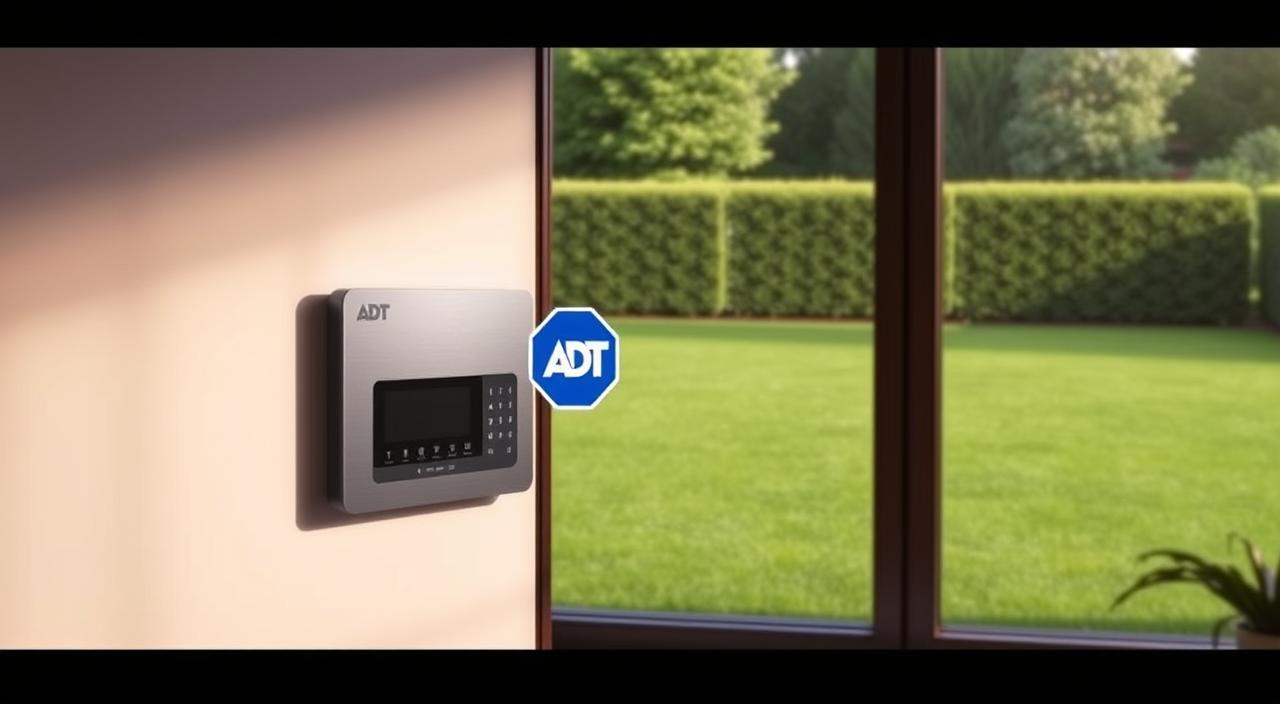
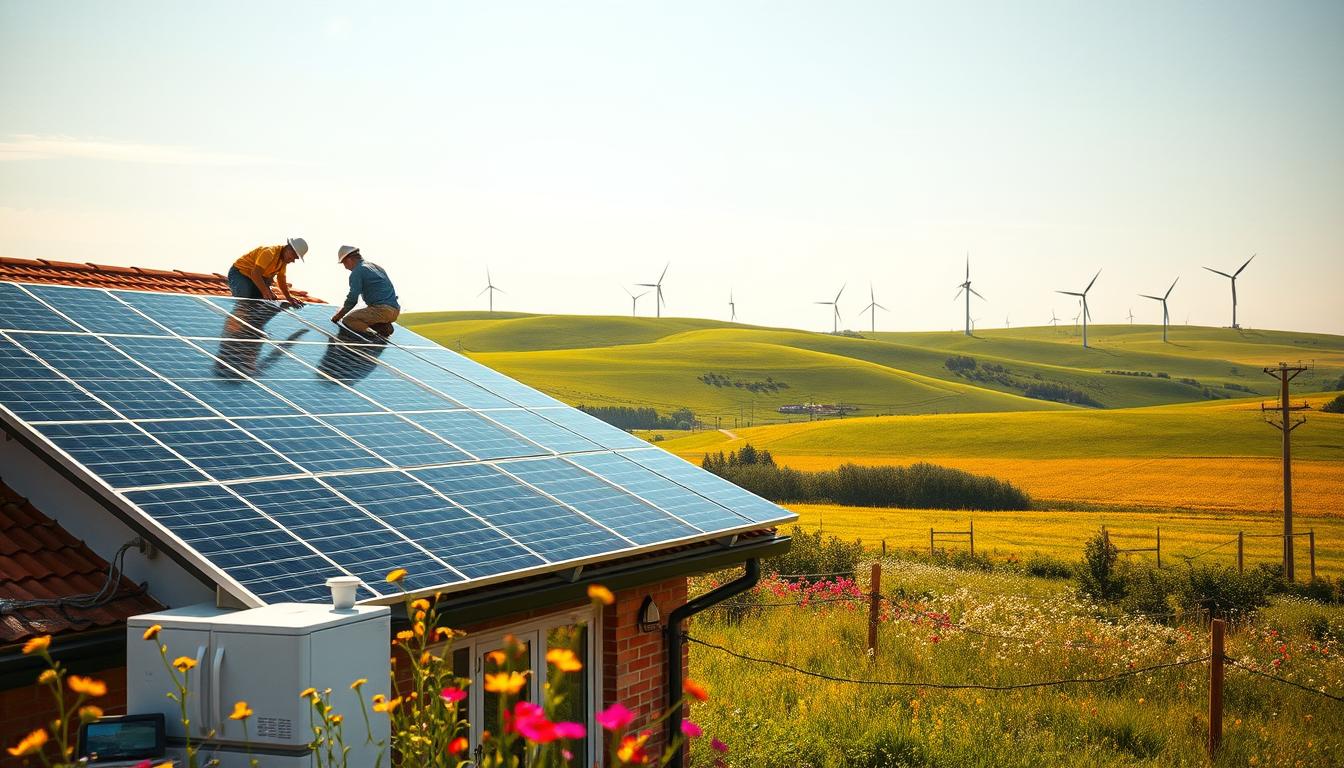
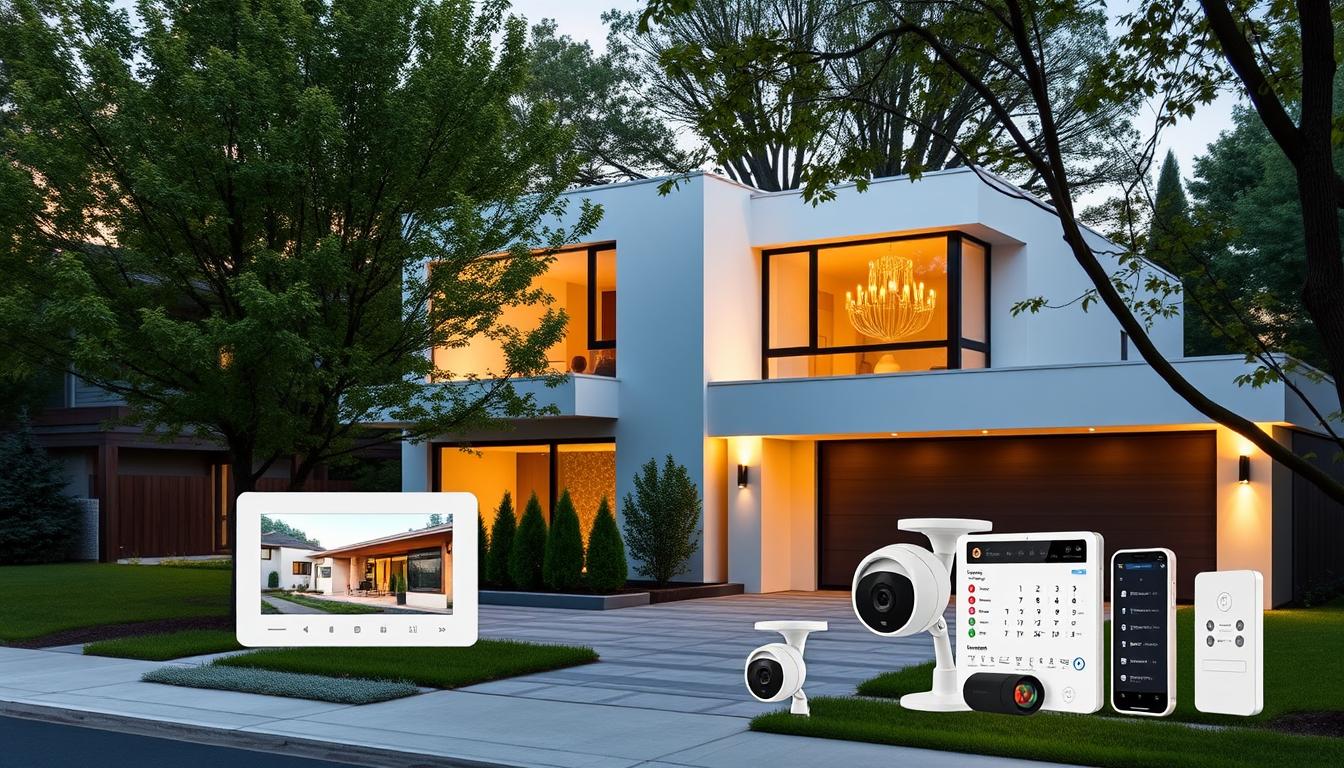
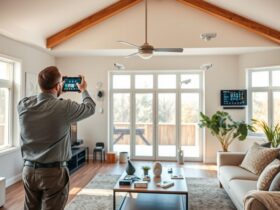
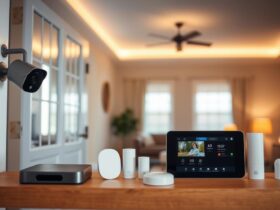
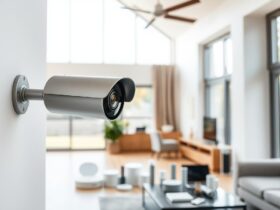
Leave a Reply